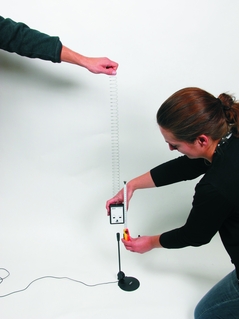
|
|
||||||||||||
|
Technical data Acoustic Doppler-effectArticle no: P6012100

Principle When an ambulance passes by, the perceived (measured) signal of the siren becomes deeper. This means that the frequencies of the perceived sound become lower. This change in the perceived frequency of waves of all kinds, while the source and observer move relative to each other, is called the Doppler effect. The Doppler effect is used in numerous technical applications, such as in traffic radar traps or for determining the speed at which the universe is expanding. In the preliminary experiment, the Doppler effect as it is known from everyday life is recalled to the students' mind in a qualitative manner based on an audible frequency, while the main experiment focuses on the case of a harmonically oscillating sound source. First, the frequency of the emitted signal is measured at rest. Then, the frequency shift that is caused by the oscillating Doppler transmitter is proved with the aid of the software. This is followed by the calculation of the velocity of movement of the sound source based on the experimental values. This calculated value is then compared to the theoretical value. Benefits
Tasks
Learning objectives
Scope of delivery
|
||||||||||||
|
|
Robert-Bosch-Breite 10 – 37079 Göttingen – Germany
www.phywe.com

